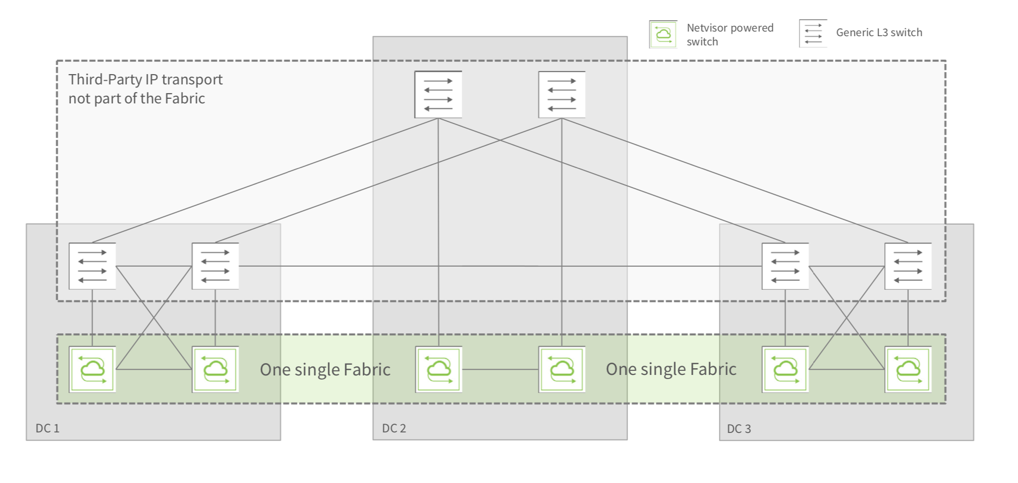About Pluribus Open Networking Multi-site Fabric
Data Center Interconnect (DCI) is the process of connecting two or more geographically distributed data center locations (also known as multi-site fabric network designs).
It is employed to ensure that data is exchanged consistently and in a timely manner among different locations for redundancy, high availability and load sharing purposes, to support a number of important design requirements that include: service resiliency (i.e., fault tolerance), performance and scale, disaster recovery, operational efficiency, local country regulations.
A multi-site Adaptive Cloud Fabric design is Pluribus’ best-in-class standards-based solution to address customer requirements for multi-site data center connectivity. It leverages the VXLAN-based feature set to be able to extend across a generic IP transport core network, as depicted in the Figure 8-11 below.

Figure 8-11: Multisite Fabric Topology Over an Agnostic IP-routed Core
Thanks to VXLAN, it boasts a number of very desirable characteristics: it’s simple, very high performance, highly redundant and can scale up to support dozens of sites, while providing high availability (HA) with ~200 ms failover times.
It’s flexible, multi-tenant, interoperable and topology agnostic: it works with any L3 core/underlay and uses sophisticated VXLAN-based Layer 2 extension and pseudo-wire technologies to achieve transparent inter-site communication with end-point tracking.
This enables the support for important use cases such as VM mobility for business continuity and geographical load sharing. In addition, it natively supports end-to-end visibility of client-server application traffic as well as of server-to-server communication flows.
In order to implement an Open DCI architecture that can scale to a multi-site design it is important to bring together all the foundational technologies discussed in the previous sections:
- Adaptive Cloud Fabric’s distributed control plane
- Switch clusters with vLAGs
- Fabric traffic optimizations
- Virtual Networks (VNETs)-based network provisioning
- Analytics collection
Pluribus provides support for different underlay architectures as well as for different routing options (centralized or distributed) for the fabric overlay.
Distributed forwarding with Fabric VRFs represents the most scalable multi-site DC design option (with both unicast and multicast support), whose configuration steps are detailed in the following sections.
